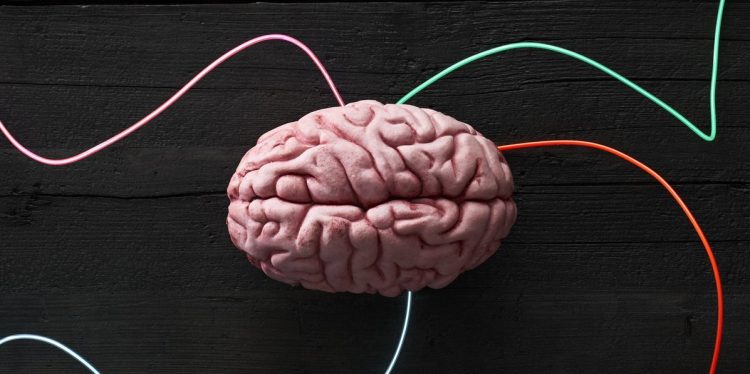We are in the early stages of deep learning, which has quickly evolved thanks to recent advancements in machine learning (ML), computer vision (CV), and artificial intelligence (AI). Deep Learning is being used in medical imaging, autonomous vehicles, social media monitoring, as well as real-time translation software.
What makes deep learning unique from traditional forms of ML is that these systems require massive amounts of data, are incredibly good at finding patterns, and can scale. But with these advantages come challenges that data scientists face on a day-to-day basis.
How data scientists work
At a high level, deep learning follows a linear progression. Data scientists start by getting data, cleaning it, tagging it, and writing code to “train” a model. During the process, data scientists may go through hundreds of experiments.
Data scientists continually train and test new models, trying different sets of data and validating that the model is working correctly. This process requires keeping track of a lot of information, and the problem grows exponentially in bigger teams. At the same time, production data may change and require new testing.
So what happens when something goes wrong, or when you need to validate the results of a past experiment against a new version?
The move toward regulation
Already, organizations like the FDA are proposing regulatory frameworks to help standardize and validate the use of AI and ML geared explicitly towards medical devices. This is a significant move that will not only help enforce a high-quality bar for data scientists’ work, but will also require more accountability on the types of models these experiments create.
It’s only a matter of time before law enforcement, financial institutions, and the automotive industry will also see a push for more regulation. Unfortunately, the tools and workflows to support accurate experiment reproducibility under audit, during testing, or by a government body are still in development.
One of the ways the industry can modernize is by taking a page out of Web and mobile development best practices called DevOps. This is the process of automating, versioning, testing of code, and deploying to production while ensuring high quality.
With the growth of DevOps culture, companies such as Netflix have been able to accelerate the deployment of fixes and updates daily. While some of the same underlying technology is available to data scientists, the field currently lacks the knowledge, culture, and specialized tools to leverage them.
The need for a DeepOps culture
At MissingLink.ai, we have spoken with over a hundred AI-first companies to understand their challenges better and believe it’s time for a set of standards for deep learning operations or DeepOps.
At the core of the deep learning workflow are three tenets: code, data, and computers. These pillars become the backbone of how we begin to define a DeepOps culture.
1. Versioning Your Code
The first tenet of DeepOps begins with tracking all code changes automatically to capture a complete history of the model’s development lifecycle. Without proper versioning of the code, data scientists not only run the risk of losing their work history but it’s difficult for others joining or auditing a project it to understand what drove the final output.
2. Managing Data
The second tenet of DeepOps is to leverage a system for managing data that can also version it in a way that enables data scientists to segment and rerun datasets without risk of corruption due to new data.
Traditional databases are not able to do this, especially when it comes to the massive amounts of data computer vision requires. They need specialized data volumes that can scale with the size of the data but also allow data scientists to re-run experiments from a specific point in time with the original dataset.
3. Automating Computers
The final tenet of DeepOps is automating the creation of pre-configured machines from the moment a data scientist needs one to cycling it down when work is completed. Deep learning requires expensive GPU powered machines and in companies where data scientists lack the skill set to manage these, it could potentially mean hundreds to thousands of dollars wasted each month — not to mention the difficulty of guaranteeing a past experiment will run on the same configuration on a new machine.
Creating a culture in deep learning that implements these three tenets is not easy without the right tools. Regardless of the tools data scientists choose today, in the not-so-distant future they will not be able to confidently reproduce a deep learning experiment based on past code or re-use data under the same conditions it was initially run.
Picking the right deep learning automation tools
While we’ve been working hard on building what we believe is a solution that helps address the three core pillars of the deep learning workflow, most companies are not at the point where they understand the impact these types of automation tools could have.
The entire field needs to work towards creating a culture where everyone on a team works together and uses a set of tools to empower data scientists to automate their work and produce better results that can be easily validated.
MissingLink works directly with AI-first companies looking to create these kinds of automated workflow solutions and is happy to set up a demo to better understand your deep learning needs. Request a demo right here.
Jesse Freeman is Chief Evangelist, MissingLink.ai.
Sponsored articles are content produced by a company that is either paying for the post or has a business relationship with VentureBeat, and they’re always clearly marked. Content produced by our editorial team is never influenced by advertisers or sponsors in any way. For more information, contact sales@venturebeat.com.

